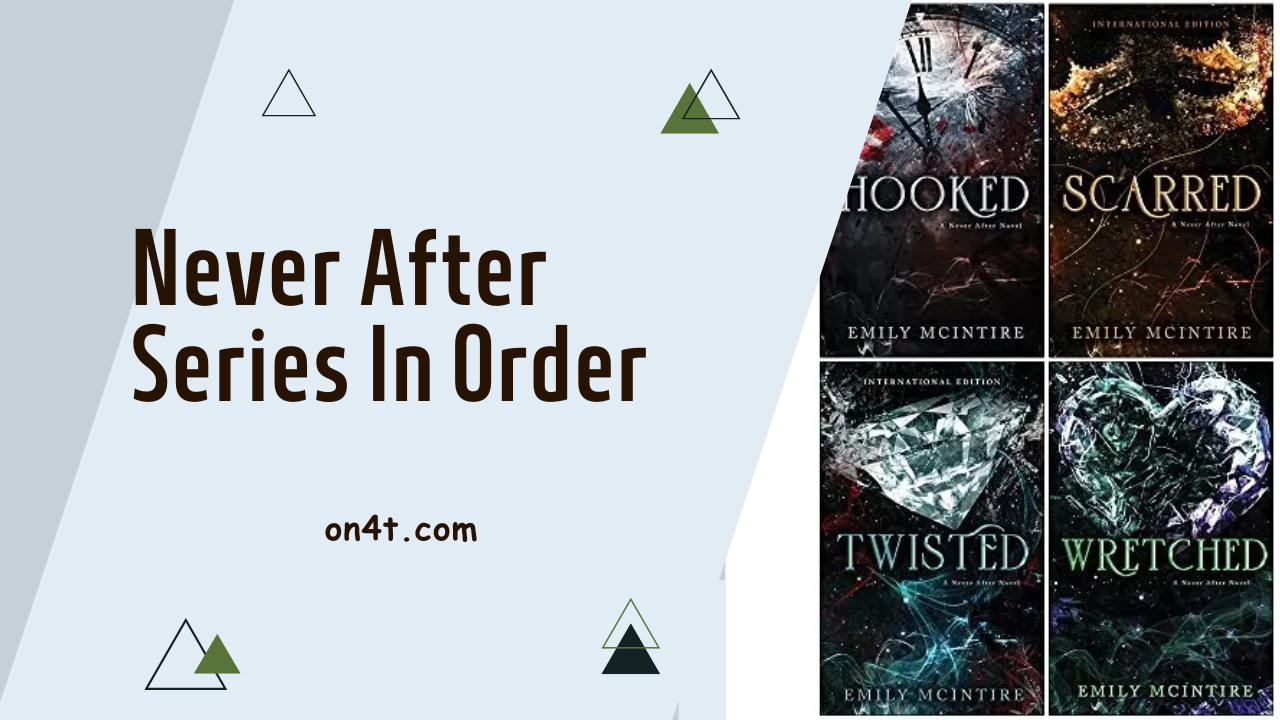In the realm of literature and storytelling, the phrase “never after series in order” holds significance as a concept denoting a departure from traditional narrative structures. It suggests a deliberate avoidance of chronological sequencing in storytelling, creating a sense of mystery and intrigue for the audience.
In this article, we will discuss the unconventional narrative technique of the “never after series in order.” We’ll explore how this approach challenges the normative expectations of storytelling, offering writers and creators a unique canvas to craft compelling narratives that captivate audiences in unexpected ways.
Understanding Never After Series In Order
The “Never After” series, authored by Melissa de la Cruz, is a collection of fantasy books that reimagines classic fairy tales with unique twists and turns. It’s aimed at a younger audience, including middle graders, and brings a fresh perspective to the stories we all think we know. If you’re looking to dive into this series, here’s the order in which you should read the books, along with a brief overview of each:
- Never After: The Thirteenth Fairy – This is the first book in the series and introduces us to Filomena Jefferson-Cho, a twelve-year-old girl who is an avid reader of the “Never After” series—a series of books in her world. Her life takes a surprising turn when she finds herself in the very world she loves to read about, discovering that the fairy tales she thought she knew are much more complicated and dangerous.
- Never After: The Broken Mirror – Continuing the adventure, the second book delves deeper into the magical world and its complexities. Filomena and her friends face new challenges, uncovering more secrets about the fairy tales and their true histories.
- Never After: The Stolen Slippers – As the series progresses, the stakes get higher. In this installment, Filomena tackles new obstacles, meets more characters from classic tales, and uncovers further layers of the Never After world.
- Never After: The Poisoned Apple (If available) – The series may continue with further adventures, exploring new twists on fairy tales, introducing new characters, and deepening the lore of the Never After world.
Melissa de la Cruz’s “Never After” series is celebrated for its inventive plot, engaging characters, and the way it seamlessly blends elements of various fairy tales into a coherent, thrilling narrative. It’s a must-read for fans of fantasy and retold fairy tales, offering a fresh take that respects the original stories while adding something entirely new and captivating.
As of my last update, the series had these titles, but it’s always a good idea to check if there are any new additions to ensure you’re not missing out on the latest adventures in the Never After world.

Complete Never After Series In Order
- Hooked (2021)
- Scarred (2022)
- Wretched (2022)
- Twisted (2023)
- Crossed (2023)
FAQs
What is the “Never After” series about?
The “Never After” series is a collection of fantasy novels that reimagine classic fairy tales with unique twists and modern elements.
How many books are in the “Never After” series?
Currently, there are four books in the “Never After” series, each offering a fresh take on beloved fairy tales.
Can the books in the series be read as standalones?
Yes, each book in the “Never After” series is designed to be enjoyed independently, but reading them in order can enhance the overall experience.
Where can I purchase the books from the “Never After” series?
You can purchase the “Never After” series from major online retailers like Amazon, as well as in select bookstores worldwide.
Conclusion
To sum up, the importance of maintaining chronological order in a series cannot be overstated. It ensures clarity, coherence, and ease of understanding for the audience. The On4t Online TTS tool exemplifies this principle by providing seamless conversion of text to speech, enhancing accessibility and user experience. By adhering to the sequence, whether in storytelling or technical processes like TTS, communication becomes more effective, allowing ideas to flow naturally and resonate with the intended audience.